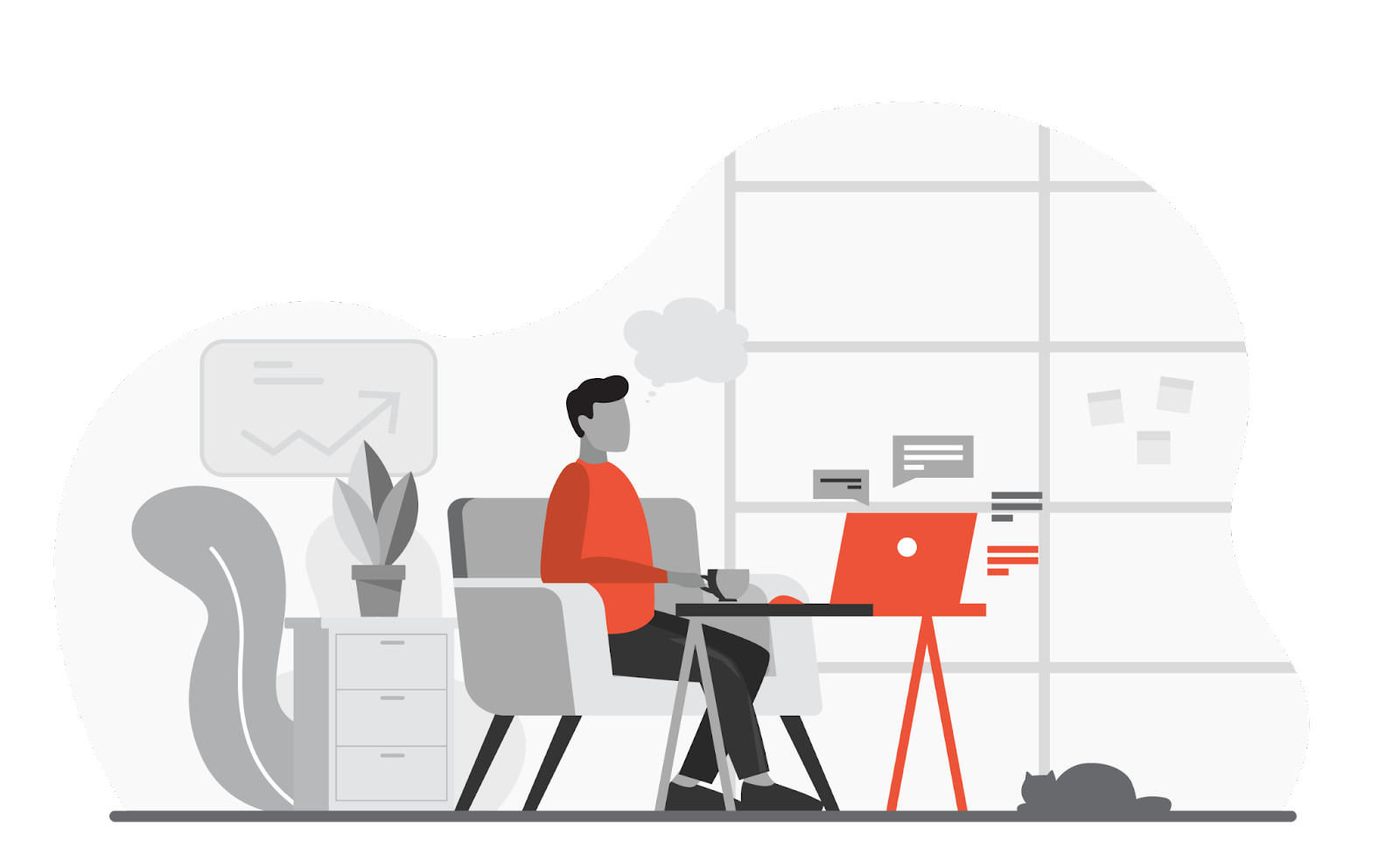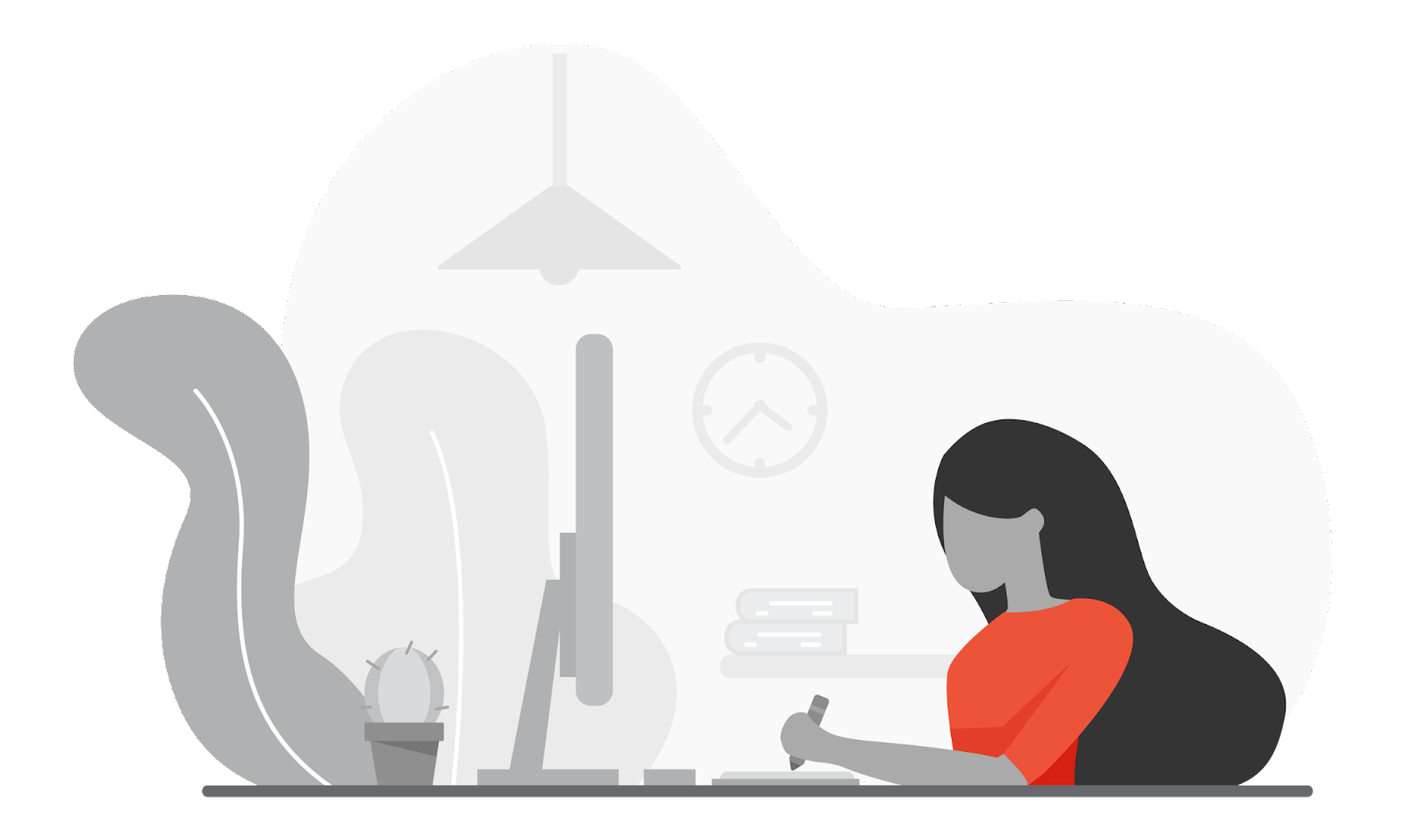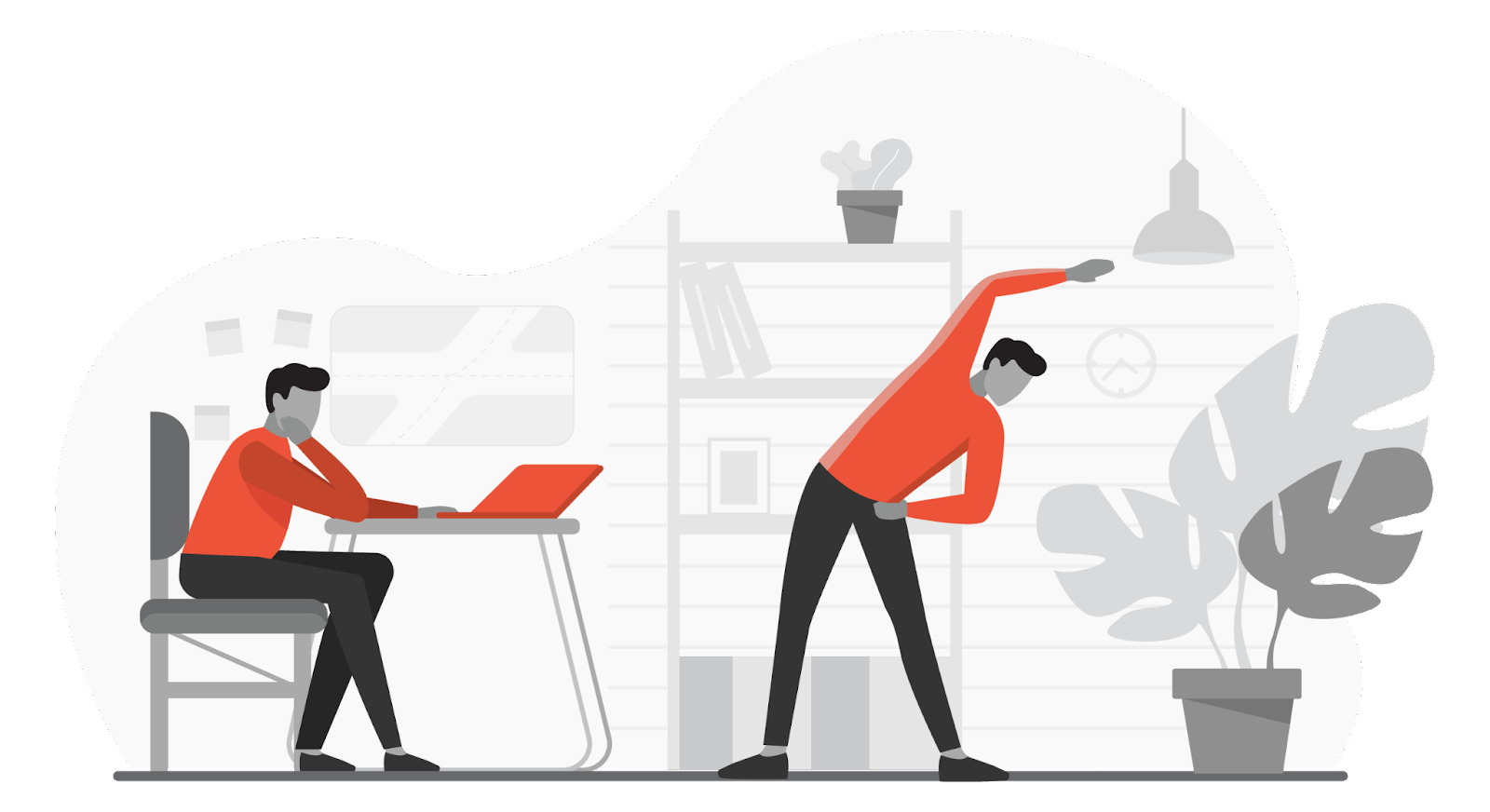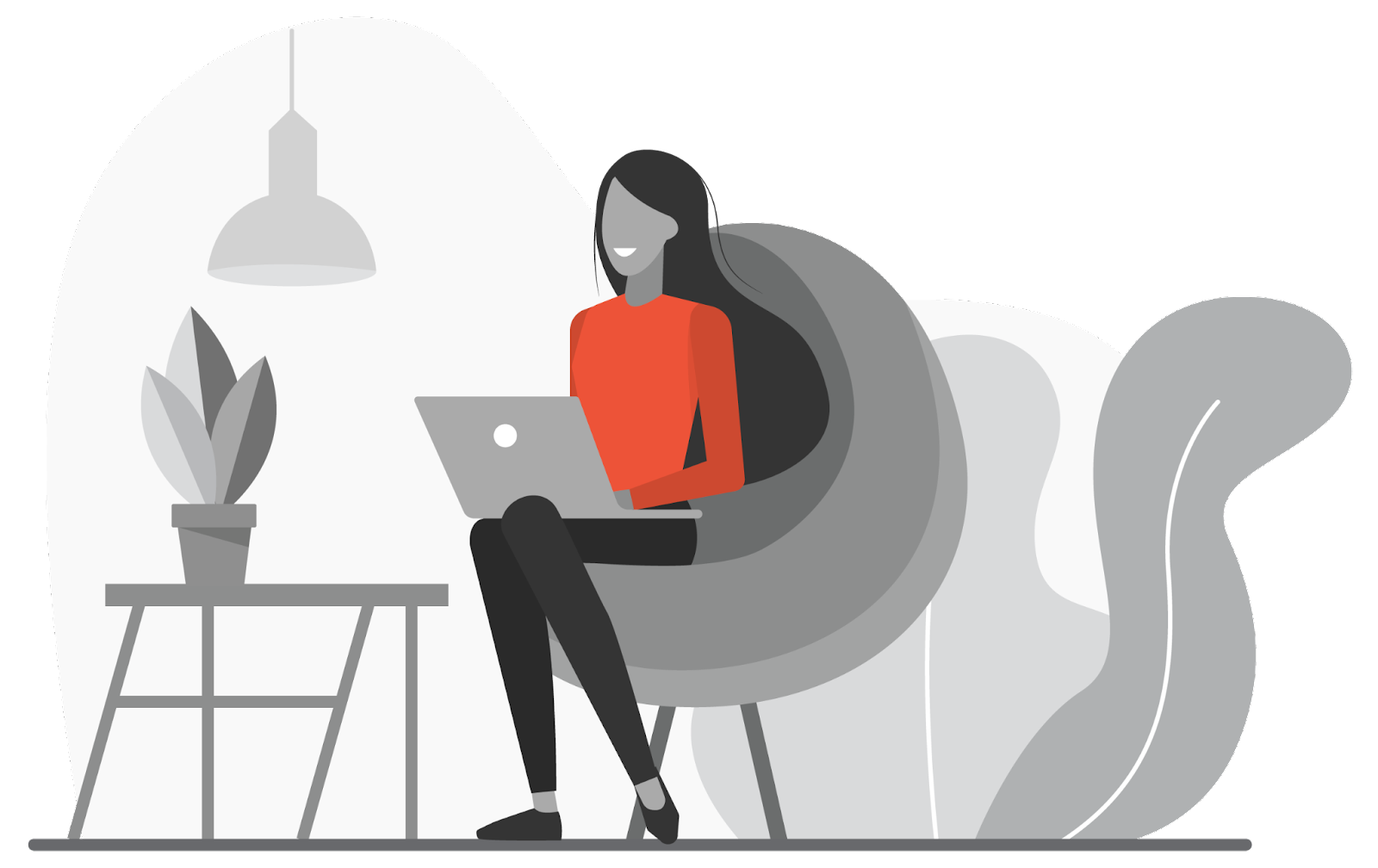10 Best Productivity Tips to Improve Your Life and Your Work
Let’s not procrastinate this, shall we? You want to be more productive, we’re here to show you how. We’ve got ten productivity tips for you to start using right away. Ready? Go.

Tip 1: Do it. Now.
Did you think that intro was short due to lack of space? No, we’re making a point.
Maybe you’ve got a lot of stuff on your plate – emails, messages, correspondence, and a few projects that need your attention. On top of just doing your job, you should focus on reducing the number of things on your plate. If it can be done in less than 2 minutes, do it. Right now. Get the quick things done first, and move on.
Kinda like we just did. There’s a long road ahead, but with a clear plate, you’re in the best position to get things done.
Tip 2: Minimize Distractions
Prevention is the best medicine, and if you can reduce the number of things that could distract you in the future, you’ll inevitably end up with fewer distractions in the present.
As you can expect, this has been studied thoroughly. One study looked at the effectiveness of application and website-blocking software, and the results were exactly as you’d expect: “We discovered that with blocking software, participants assessed their productivity significantly higher and could focus significantly longer.” (Mark, 2017).
What’s more interesting, though, is that not all distraction-blocks are the same. According to the study, “People who benefited the most from the software were those who were most distracted by social media.” So, not only is this section of special interest to you if you’re a social media user, but if you’re looking for a few select things to block, you should put social media on the top of your list.
The study also found that, for some, complete distraction removal had the side effect of increasing stress. Stress is already known to reduce productivity, so it’s important to strike a balance that works for you. Breaks of 5-15 minutes should serve as stress-relieving distractions, without eating too much productive time.
Of course, distraction-elimination goes beyond those oh-so-enticing devices and apps. This process is multi-faceted, covering just about everything that exists around you – even job-related things, like email notifications, coworkers, and more. Each of these topics will have unique tactics for distraction-elimination. Perhaps you’ll turn off all notifications, physically distance yourself from distracting workers, or put up a do-not-disturb flag on your desk.
The important thing is, once you start working, do everything you can to ensure that you keep working, potentially reaching a ‘flow’ state. And once you do, try not to let anything break your focus!
Tip 3: The 5 Minute Rule & Finding your Flow
Objects at rest tend to stay at rest, and objects in motion tend to stay in motion, until acted upon by an outside force. It’s true for physics, and as it turns out, it’s also true for productivity. And luckily, we already eliminated those “outside forces” in our last tip!
The hardest part of accomplishing a big task is the beginning. Whether it be lingering instincts towards procrastination holding you back, or difficulty “task switching” into a new mindset, there’s always some hangup making this difficult. While we can’t remove all hurdles, we can make the effort as minimal as possible.
Can you mentally set aside several hours to complete a task? Maybe not. But how about 5 minutes? Everyone has 5 minutes to spare. You won’t finish the job, obviously, but you’ll at least have gotten something done. This is the 5-minute rule – you can probably guess how it got its name. And, if you were paying attention to that intro, you probably know the trick to this technique.
If you can dedicate just 5 minutes of time to something, then before you know it, you’ve already overcome your mind’s biggest obstacle: starting the task to begin with. Once you get some momentum going and get into a “flow” state, continuing the task is as easy as maintaining the status-quo.

Tip 4: Make it a Habit
Once you find your groove, keep going. This advice may sound obvious, but there’s a trick to it you may not be aware of. “Keep going” doesn’t mean you should work until you exhaust yourself! Work for a regular amount of time, on a regular amount of projects. Tomorrow, you should match that pace. Keep the streak going day after day, and each one gets a little easier.
Getting something done at regular intervals, even if it’s a small amount, contributes to one of the most powerful psychological forces the mind can use: habit formation. Get familiar with your current workload, and if you want to increase the amount of work you can handle, do it little by little. According to studies, variation in workflow actually has a negative impact on productivity, so sudden spikes/lulls in the amount of work you need to do should be avoided.
“The results indicate that the key for productivity improvement is not to complete as many tasks as possible or to maximize workload, work output, or work hours without following the work plan. Rather, the key is to focus on maintaining a predictable work flow and thus be able to match the available workload with capacity.” (Liu et all, 2011).
Working long days isn’t good for anyone – neither for you, nor for your work quality. The secret to success here is a long-term plan of discipline and pacing yourself, developing the habits and skills needed to be more productive overall. If “just thirty minutes a day” is all you can manage, that’s excellent. Get it done, and before you know it you’ll have a consistent path to success.
Tip 5: Avoid Burnout!
There’s another benefit to pacing yourself, besides assisting habit formation. You should never load up a ton of work at once – that’s a surefire way to create burnout!
Passion is an extremely powerful motivator, and its loss alone is enough to send productivity down the drain (Dewa et al, 2014). Couple this with a general lack of energy stemming from mental exhaustion, and you create a recipe for disaster. The mental and physical toll just isn’t worth it.
Avoiding burnout for yourself is a good way to keep things running smooth, but this doesn’t have to be a solo job! In fact, one study recommends turning away from that perspective entirely, and viewing burnout more like a collective responsibility. “Faculty stress should not be viewed as a personal problem. Instead, it should be viewed as an organizational issue.” (Bruce, 2009).
Learn how to recognize signs of burnout in others, and help them to ensure they’re not taking on too much work at once. This can involve taking on some of their workload if need be, or talking to project managers about work allocation. ‘Do unto others as you would have done to yourself’, after all. If each person does their part, burnout can be avoided for everyone.
Tip 6: The 15 Minute Rule & Improving Problem-Solving Skills
Turns out, there’s more than one minute-based productivity tip!
You are going to hit a roadblock eventually. No matter how hard you prepare or how many resources you think you have, you’re only human. At some point during your job, you’ll run into a problem that you don’t know how to immediately solve.
So, you find yourself at a crossroads. On one path, you dig around your bag of tricks, you examine the problem in more detail, and hopefully, find a solution. The risk here, though, is that this costs a lot of time – and that investment might not pay off. If your instincts tell you that you don’t have an answer to this, they might be right.
On the other path, we have something that seems faster and easier for you, but comes with another downside: getting assistance from someone else. Here, if your instincts are telling you that this route is just wasting someone else’s time, or that you’re forgoing a possible learning opportunity, they may be right.
But if you know the cheat code – the 15 minute rule, you unlock a third path. Here, you have the upsides of both while minimizing the consequences. And it’s incredibly simple: give yourself a time limit of 15 minutes to fix the problem. If that doesn’t work, go find a helping hand.
15 minutes doesn’t seem like a lot of time. And that’s because it isn’t. But have you ever spent 15 minutes stuck in traffic? Now that’s a long wait. Getting stuck in a task isn’t that different. 15 minutes offers you plenty of time to determine if you’re dealing with a speed bump or a mountain, and with a time limit, there’s no chance of you wasting more time than necessary – you only spend a speedbump’s worth of time either way.
And as an added bonus, you’ll learn a lot about the process of problem solving this way! The first time you invoke this rule, you might not reach your goal in the time limit. But how about the 3rd time? The 10th? Eventually, you’ll get to a point where you won’t need this tip at all – your skills surpassing it completely. And when you do, congrats! You’ve been made way more productive.

Tip 7: Exercise
If you ever find yourself losing focus on any productive day, that’s ok. You can take a quick break. That restlessness you feel – it’s perfectly natural. Your body is telling you what it needs, and it’d benefit you to listen.
Every so often, consider leaving your desk to just walk around. Maybe do some stretches, if you’re so inclined. You can even pair it with a light snack. Your body is an expert on its own needs, and if you spend just a couple minutes listening to it, you’ll be able to return to your work with a revitalized sense of focus. The research is clear: “By performing exercise regularly, users can attain better physiological states and achieve higher work productivity.” (Kwok et al, 2021).
Tip 8: Avoid Multitasking
Be warned, this next paragraph might seem incoherent. Trust the process: there’s a reason why it’s structured this way.
A lot of articles like this will tell you that multitasking is impossible. Focus is something we’ve talked about before, as is the need to shut out distractions. Multitasking used to be a major focal point of discussions around productivity, first cropping up when computers were developed that were purpose-built for multitasking. Distractions, or really anything that diverts attention from the current task, is going to negatively impact the thing you’d much rather be doing. Computers are not people – the human mind is just not built for multitasking, it contradicts the way we work on a fundamental level. So, it’s almost always best to finish your current task before starting a new one.
If you had trouble following that first paragraph, then congratulations, you’re part of the 98% of people who cannot effectively multitask. If you want to read it properly, skip every even-numbered sentence, then go back and re-read the lines you skipped as if they were a separate paragraph.
Multitasking isn’t just a way to take perfectly-functional tasks and turn them into unworkable messes, though. It’s also a guaranteed way to stress you out, or worse. If that paragraph frustrated you, then you’ll have felt this process in action. Be grateful it’s not a daily task.
“Multitasking contributes to the release of stress hormones and adrenaline, which can cause long-term health problems if not controlled, and contributes to the loss of short-term memory.” (Rosen, 2008). The data on this is extremely clear – do not multitask if you can avoid it. It’s just never worth it.
Tip 9: “Perfect” is the enemy of “Good”
The desire to get each detail right is understandable; near-mandatory in some jobs. But perfectionism can also be a curse. If it takes you 50% longer to create some product, but that extra time only returns a 25% increase in quality, the gap in output between yourself and your coworkers will rapidly widen over time.
One little trick to working around perfectionism is to reframe how you look at a given task. With this lens, the task is not something that’s just worked on and shipped out. It’s a process of iteration, where you ‘finish’ one thing to test the waters, get some feedback, make the next one better, and repeat. It doesn’t have to be the best possible product the first time, and with the help of feedback, you’ll increase your skills much faster than without. After enough cycles, you may even be able to create that perfect product with minimal time lost! But that takes work, and if you’re a perfectionist, well, you’re no stranger to putting in work for the best possible reward.
That’s exactly what you’ll be doing here, just in a slightly different way than you’re used to.
Tip 10: Find Your Centre
This next subject is fairly complicated, and not something we can fully cover in a single subsection of an article. Luckily, we don’t have to – a whole article on this exact topic already exists on this site!
In short, the physical location where you do your work can be as important as the skills and habits you take with you. Not just in terms of minimizing distractions, but also in employing little psychological tricks to put your mind exactly where it needs to be.
Often, just having a space that’s completely separate from all your other usual duties can work wonders for mental focus. And such a space, if built properly, can accomplish so much more. It can be a place with enough natural light to avoid feeling cramped. It can have the walls painted exactly the right color to center certain emotional states. It can feature other coworkers all working on the same task, offering advice and networking opportunities, among other things.
A space like this is something you can create yourself, or you find a professionally-made space that’s suited to your needs. Each route has its own pros and cons – but if you find a space that resonates with you, stick with it.

Book a meeting room in Toronto
If you want to test out a variety of working spaces, The Professional Centre has plenty of options to fill your exact niche – on top of providing options and technology for meetings, group work, and so much more.
Pick up all the benefits of a centralized workplace, without any of the firm anchors keeping your business rooted in a single method. Whether you need to service a large team or a small meeting, The Professional Centre can supply the exact kind of space you need to enhance your team’s productivity.
The 15 Minute Rule & Improving Problem-Solving Skills
You are going to hit a roadblock eventually. No matter how hard you prepare or how many resources you think you have, you’re only human. At some point during your job, you’ll run into a problem that you don’t know how to immediately solve.
So, you find yourself at a crossroads. On one path, you dig around your bag of tricks, you examine the problem in more detail, and hopefully, find a solution. The risk here, though, is that this costs a lot of time – and that investment might not pay off. If your instincts tell you that you don’t have an answer to this, they might be right.
On the other path, we have something that seems faster and easier for you, but comes with another downside: getting assistance from someone else. Here, if your instincts are telling you that this route is just wasting someone else’s time, or that you’re forgoing a possible learning opportunity, they may be right.
But if you know the cheat code – the 15 minute rule, you unlock a third path. Here, you have the upsides of both while minimizing the consequences. And it’s incredibly simple: give yourself a time limit of 15 minutes to fix the problem. If that doesn’t work, go find a helping hand.
15 minutes doesn’t seem like a lot of time. And that’s because it isn’t. But have you ever spent 15 minutes stuck in traffic? Now that’s a long wait. Getting stuck in a task isn’t that different. 15 minutes offers you plenty of time to determine if you’re dealing with a speed bump or a mountain, and with a time limit, there’s no chance of you wasting more time than necessary – you only spend a speedbump’s worth of time either way.
And as an added bonus, you’ll learn a lot about the process of problem solving this way! The first time you invoke this rule, you might not reach your goal in the time limit. But how about the 3rd time? The 10th? Eventually, you’ll get to a point where you won’t need this tip at all – your skills surpassing it completely. And when you do, congrats! You’ve been made way more productive.
Rethinking your organization’s workspace? Discover our flexibly designed and fully managed enterprise office solutions.
Works Cited:
Bruce, S. P. (2009). Recognizing stress and avoiding burnout. Currents in pharmacy Teaching and Learning, 1(1), 57-64.
Dewa, C. S., Loong, D., Bonato, S., Thanh, N. X., & Jacobs, P. (2014). How does burnout affect physician productivity? A systematic literature review. BMC health services research, 14(1), 1-10.
Kwok, R. C. W., Leung, A. C. M., Hui, S. S. C., & Wong, C. C. K. (2021). Virtual trainer system: A tool to increase exercise participation and work productivity. Internet Research.
Liu, M., Ballard, G., & Ibbs, W. (2011). Work flow variation and labor productivity: Case study. Journal of management in engineering, 27(4), 236.
Mark, G., Iqbal, S., & Czerwinski, M. (2017, September). How blocking distractions affects workplace focus and productivity. In Proceedings of the 2017 ACM International Joint Conference on Pervasive and Ubiquitous Computing and Proceedings of the 2017 ACM International Symposium on Wearable Computers (pp. 928-934).
Rosen, C. (2008). The myth of multitasking. The New Atlantis, (20), 105-110.




